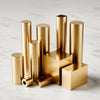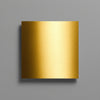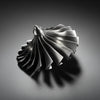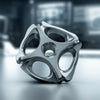The Science of Grit Size in Sand Blasting: Precision Surface Engineering
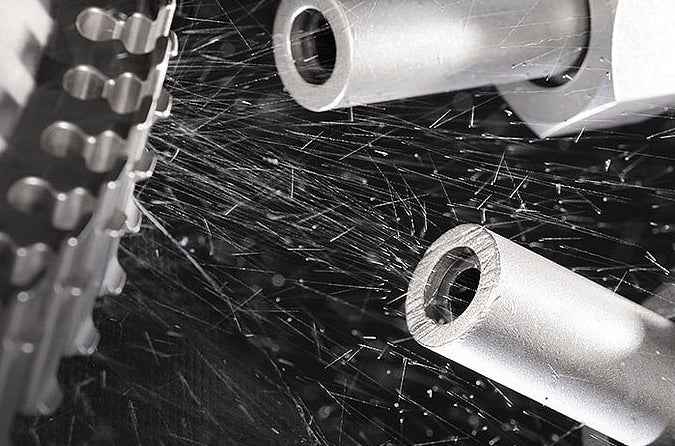
How to Select Grit Size in Sand Blasting: A Data-Backed Framework
1. Grit Size Classification & Applications
| Grit Type | Size Range (µm) | Ideal Use Cases | Avoid When |
|---|---|---|---|
| Extra Coarse | 1,000–2,000 | Heavy weld removal, rapid deburring | Thin-walled parts (±0.1mm tolerances) |
| Coarse (#36–#60) | 420–250 | Casting cleanup, oxide scale removal | Mirror-polished substrates |
| Medium (#80–#120) | 180–125 | General matte finish, prep for painting | Critical sealing surfaces |
| Fine (#180–#220) | 80–53 | Medical implants, aerospace interfaces | High-wear components |
| Extra Fine (#320+) | <45 | Optical components, semiconductor tooling | Corrosion-prone environments |
2. The Process Optimization Formula
-
Pressure Adjustment:
-
Coarse grit: 60–80 PSI (ensures kinetic energy for material removal)
-
Fine grit: 25–40 PSI (prevents surface deformation)1
-
-
Nozzle Distance:
-
Short distance (15–20cm): Aggressive cutting with coarse grit
-
Long distance (30–40cm): Diffused pattern for fine-grit uniformity
-
-
Angle of Impact:
90° for maximal material removal (coarse), 30–45° for peening effect (fine)
3. Advanced Techniques
-
Grit Mixing: Blend 70% #120 + 30% #220 for balanced roughness (Ra 1.5–2.0µm) and edge retention
-
Sequential Blasting: Start with #80 for defect removal → finish with #220 for Ra 0.4µm
-
Media Recycling: Reuse ceramic grits ≤3× to maintain consistency (saves 20% costs)
Results and Benefits: Quantified Performance Gains
Surface Integrity Metrics
Table: Grit Size vs. Critical Surface Properties (AISI 304 Stainless Steel Data)
| Grit Size | Ra (µm) | Rz (µm) | Fatigue Strength Increase | Coating Adhesion (ASTM D3359) |
|---|---|---|---|---|
| #36 | 3.5–5.0 | 25–40 | 8% | 2B (Moderate) |
| #120 | 1.2–1.8 | 8–12 | 15% | 4B (Good) |
| #220 | 0.3–0.6 | 2–4 | 22% | 5B (Excellent) |
Operational Advantages
-
Reduced Secondary Processing: Fine-grit blasting (Ra ≤0.8µm) eliminates manual polishing, cutting labor by 40%
-
Extended Component Life: Aerospace studies show #220-blasted turbine mounts withstand 100,000+ cycles vs. #80’s 65,000
-
Contamination Control: Angular ceramic grits (Al₂O₃) leave no embedded residues vs. silica sand.
The Cost-Quality Tradeoff: Strategic Implementation
When to Go Fine:
-
Functional surfaces (hydraulic seals, bearing seats)
-
Biomedical devices (Ra <0.4µm inhibits bacterial adhesion)
-
Adhesion-critical coatings (anodizing, PVD)
When Coarse Wins:
-
High-volume deburring (automotive castings)
-
Rust/coating removal (structural steel)
-
Texturing for grip (hand tools, ladder rungs)
"Grit size selection is a multiplier—it either amplifies or undermines your entire finishing budget." — Surface Engineering Handbook, ASM International
Pro Tips for Engineers
-
Test First: Blast coupons at 3 grit sizes to correlate Ra vs. fatigue performance
-
Monitor Wear: Replace grit when 15% particles fracture (prevents Ra drift)
-
Layer Media: Use glass beads over #220 Al₂O₃ for compressive stress without Ra change
-
Automate: Robotic blasting with force-feedback maintains 0.02µm Ra consistency
Optimized blasting isn’t guesswork—it’s particle physics meets precision manufacturing. By mastering grit size variables, manufacturers achieve 30% faster finishing cycles and 18% longer component lifetimes. For Ra certification protocols or media lifecycle data, request our validation datasets.
-
-
Posted in
cnc machining, Post processing, Sand Blasting

